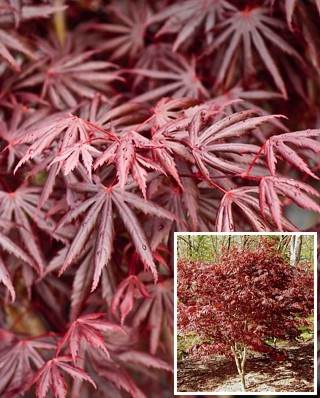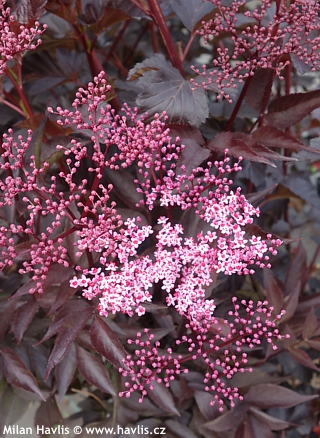Acer palmatum 'BLOODGOOD' Japanese maple
Acer
Japanese maples are very decorative and usually low shrubs, occasionally small trees, with attractive foliage and picturesque structure. There are many varieties in various shades of green, chartreuse, golden and yellow, red to maroon, and even multicoloured (variegated). They originate from Asia (Japan, China, Korea), where they have been cultivated for at least two centuries or perhaps even longer, however, they were introduced to Europe only at the beginning of the 19th century, specifically to Great Britain in 1820. Interestingly, the botanist Carl Peter Thunberg described them much earlier, in 1784, because he undertook an expedition to Japan in 1775-1776, discovering new species and collecting seeds and plants. He named the tree Acer palmatum, referring to the leaf shape resembling a human hand with fingers, although it is said that they first reminded him of frog fingers, which is also one of its oldest Japanese names: kaede. The other is momiji (baby hands). The beauty of the colours and shapes of the leaves and trees is reflected in many arts, for example, in the oldest preserved collection of Japanese poetry from the 8th century, the Man'yōshū (Collection of Ten Thousand Leaves). The Chinese poet Wang Wei (699-759) celebrated their beauty in many of his works, and naturally, maples often appeared in ancient paintings, tapestries, porcelain, and wherever classic and traditional decorations associated with the symbolism of these maples were desired: beauty and elegance, serenity, endurance, vitality, and transformation.
Bloodgood is a purple-leaved Japanese maple variety of rapid growth which will create the typical Japanese garden atmosphere both as a specimen tree and as a backdrop. It is a very successful variety, especially thanks to the reliable foliage colour. Its deciduous leaves are dark maroon, deeply lobed with most usually 7 tips, and do not change colour during summer like some other purple-leaved maples. In autumn they turn bright red. The colour of bark and twigs is dark purple-black which easily distinguishes Bloodgood from similar varieties during dormancy.
It forms a tall shrub or small, usually multi-stemmed tree with an airy yet dense canopy. It exhibits upright growth at first, but with age it forms a rounded crown as one of the few red-leaved Japanese maples. Although it grows moderately fast, its height in gardens usually slows down once it reaches around 3-4 meters and begins to thicken the canopy. The width of the crown in the canopy rarely exceeds 3m in common gardens, but the total size in parks and sites with unlimited root space can be up twice as much or perhaps a bit more.
Bloodgood is an easy-care, hardy plant, which does not need much maintenance. Just watch out for dry leaves and branch ends in full season which might mean a monilia infection. In such case the plant has to be treated against the illness immediately. This variety does well in full sun, too. Japanese maples require light, slightly acidic, semi-fertile, moist soil to establish extensive root system. Young plants need mulching for winter. Plants older than 3 years are reliably hardy to at least -27 °C (USDA zone 5b), perhaps a few degrees more.
Last update 08-12-2008; 05-09-2023

































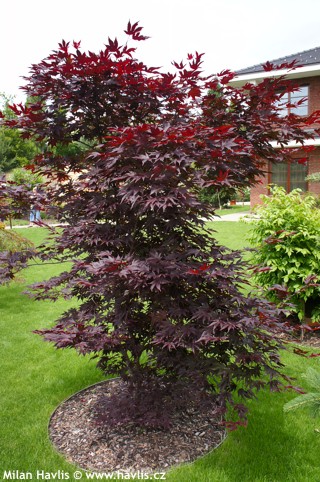
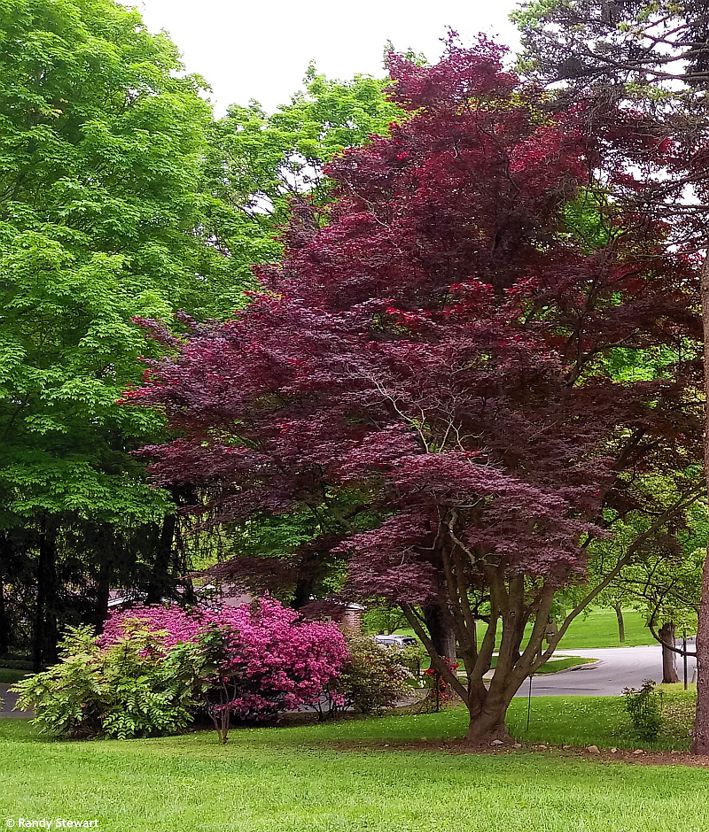
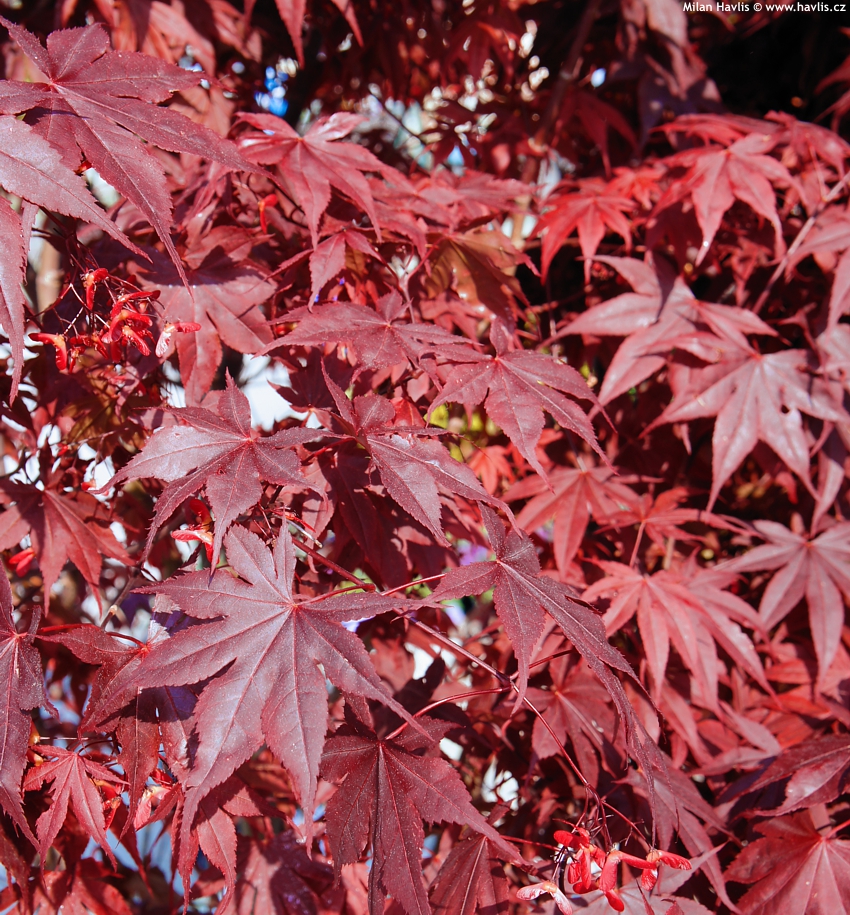
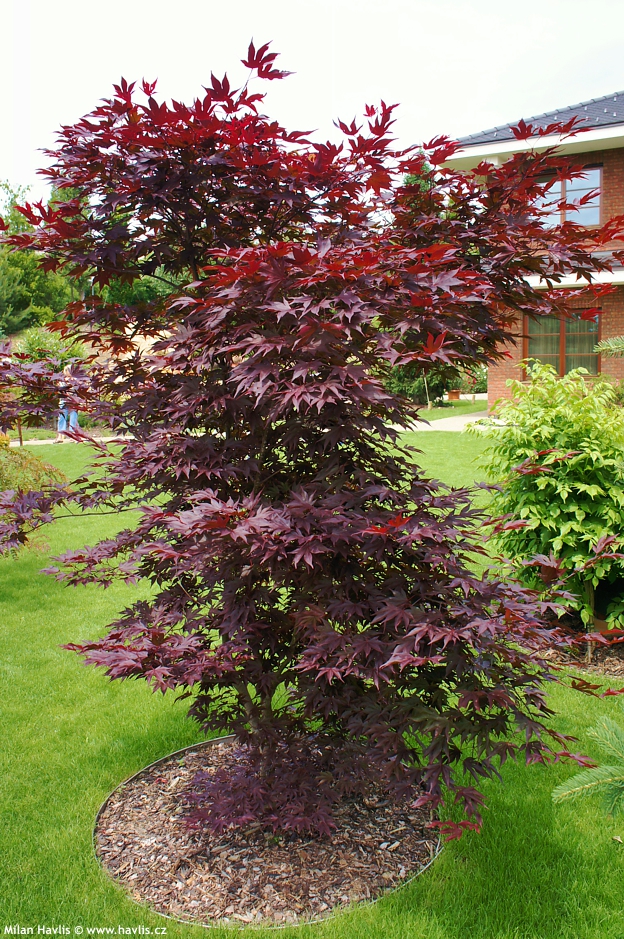


.jpg)
